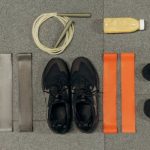Setting fitness goals is a crucial step towards achieving a healthier lifestyle. However, many people struggle to set goals that are both realistic and achievable. In this article, we will explore some key strategies for setting fitness goals that will help you stay motivated and on track.
Assess Your Current Fitness Level
Before setting any fitness goals, it’s important to assess your current fitness level. This will give you a baseline from which to track your progress. Consider factors such as your cardiovascular endurance, strength, flexibility, and body composition. You can also consult with a fitness professional who can help you determine your starting point.
Define Your Why
Understanding your motivation for wanting to achieve your fitness goals is crucial. Take some time to reflect on why you want to make changes in your life. Do you want to improve your overall health? Are you training for a specific event or sport? By defining your why, you will be more likely to stay committed when challenges arise.
Set Specific and Measurable Goals
Setting specific and measurable goals is essential for tracking your progress. Instead of saying, “I want to lose weight,” try setting a goal such as, “I want to lose 10 pounds in the next three months.” This gives you a clear target to work towards and allows you to measure your success along the way.
Break It Down
Once you have set your main goal, break it down into smaller, more manageable steps. This will make your goals feel less overwhelming and more achievable. For example, if your goal is to run a marathon, start by setting smaller goals such as running a 5K or a half marathon. Each milestone reached will boost your confidence and keep you motivated.
Be Realistic
When setting fitness goals, it’s important to be realistic. Consider your current lifestyle, commitments, and limitations. Setting goals that are too ambitious or unrealistic can lead to frustration and disappointment. It’s better to set smaller, attainable goals that you can build upon over time.
Create a Plan
Once you have defined your goals, create a plan of action. Break down your goals into monthly, weekly, and daily tasks. This will help you stay organized and focused on the steps needed to achieve your goals. For example, if your goal is to improve your strength, your plan might include three strength training sessions per week and gradually increasing the weight or intensity over time.
Track Your Progress
Tracking your progress is crucial for staying motivated and accountable. Keep a journal or use an app to record your workouts, measurements, and any other relevant data. This will allow you to see how far you’ve come and identify areas where you may need to adjust your approach.
Stay Flexible
While it’s important to set specific goals, it’s equally important to stay flexible. Life happens, and there may be times when you need to adjust your goals or approach. Be open to making changes as needed, and remember that progress is not always linear. As long as you’re consistently working towards your goals, you will continue to move forward.
Celebrate Your Achievements
Finally, don’t forget to celebrate your achievements along the way. Take time to acknowledge your progress and reward yourself for reaching milestones. This will help you stay motivated and reinforce the positive habits you’ve developed.
In conclusion, setting realistic and achievable fitness goals is essential for long-term success. By assessing your current fitness level, defining your why, setting specific and measurable goals, breaking them down, and creating a plan, you will be well on your way to achieving your desired results. Remember to track your progress, stay flexible, and celebrate your achievements. With dedication and perseverance, you can transform your health and fitness one goal at a time.





